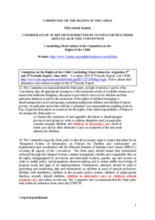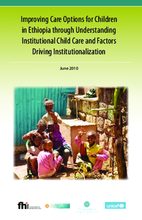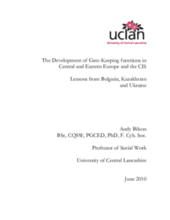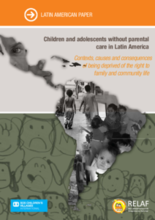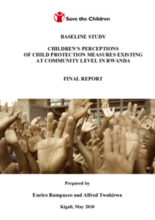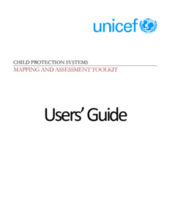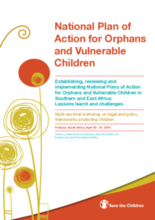Displaying 1421 - 1430 of 1759
In June 2010, the Committee on the Rights of the Child issued its Concluding Observations to countries reviewed during the Committee's 54th session. This brief summarizes the UNCRC observations regarding alternative care.
This briefing paper draws on ODI’s research on social protection and gender in eight countries and three regions funded by DFID and AusAID and discusses how social protection interventions can promote an inter¬linked gender-sensitive approach to the MDGs.
Family engagement is the foundation of good casework practice that promotes the safety, permanency, and well-being of children and families in the US child welfare system. This brief offers information to help State child welfare managers improve family engagement across program areas.
This document contains the minimum standards for placing children in foster care in Bosnia and Herzegovina. The Minimum Standards includes service specifications, instruments for monitoring compliance with standards, and guidelines for use of the minimum standards for day centers for children with developmental disabilities.
Findings and recommendations of the first national study of its kind in Ethiopia to study child care institutions, institutionalized children, and factors driving institutionalization.
This report looks at children who enter institutional care because of being without parental care, children with disabilities, child victims of abuse and children in conflict with the law. The aim is to identify key routes through the systems in order to understand the nature of the difficulties that lead children to be placed in institutions and thereby to be able to identify alternative strategies that will better support families and children.
This paper is based on The Latin American Report: The situation of children in Latin America without parental care or at risk of losing it. Contexts, causes and responses, which was prepared using reports from 13 countries in the region. The paper gives an overview of the state of one of the most fundamental rights - the right to parental care, a keystone for the right to live in a family and a community.
This participatory baseline is part of a multi-country study commissioned by Save the Children targeting selected areas of Rwanda, Ethiopia and North-Sudan. The purpose of the multi-country study is to address the UN Study on Violence Against Children’s recommendations and assess the role of communities in ensuring that children are protected from violence and abuse at all levels.
Assists in the development and application of an analytic tool for mapping and assessing existing child protection policies, laws and services for adequacy and to identify obstacles and opportunities in implementation, especially in reaching vulnerable or excluded groups.
This report focuses on the experiences of Save the Children in monitoring, implementing and reviewing NPAs in Angola, Ethiopia, South Africa, Swaziland, Mozambique, Uganda and Zimbabwe. Each of the country offices commissioned the documentation of case studies to identify promising practices and challenges around effective implementation of NPAs.

